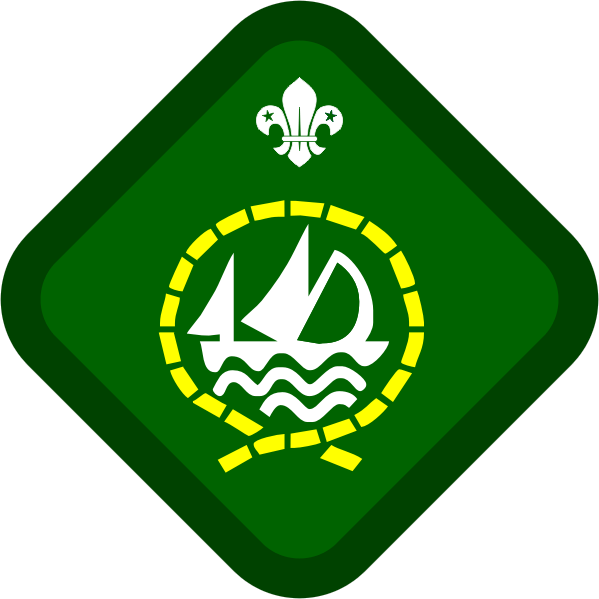


Boatswain
- Complete the following:
- Have a general knowledge of ropes, including different uses, stresses and strains, and demonstrate the correct methods of stowing cables, coiling light lines and painters.
- Have a knowledge of sail canvas and Terylene, be able to name the parts of a sail and know how to maintain sails in good condition.
- Have a good knowledge of both standing and running rigging in:
- an open sailing craft;
- a gaff-rigged vessel;
- a class racing boat.
- Have a practical knowledge of at least three types of purchase tackles.
- Demonstrate that you can heave a lifeline 18 metres with reasonable accuracy.
- Complete the following:
- Be able to use a palm and needle and make a drogue with canvas.
- Make a rope fender for a dinghy.
- Make a grommet and a stopper knot ready for operational use in a sailing boat.
- Complete a long splice or make up a pair of lizards using bull’s eyes or thimbles.
- Demonstrate in a sailing boat whilst underway the following: single catspaw, running bowline, double sheetbend and mouse a hook.
- Take a regular and practical part in one of the following activities:
- Constructing a canoe.
- Constructing a hard chine boat.
- Carrying out hull repairs to a wood, fibreglass or plastic boat.
- Making a spinnaker or stormsail.
- Take a responsible part in one of the following activities:
- Rig a derrick (or derricks) with rope, spars and tackles and so on, and lift a small dinghy from the water.
- Rig a form of breeches buoy, using a lifebuoy, ropes, tackles and spars and so on, and demonstrate its use.
- Launch a boat from a sandy or shingle foreshore, beach the craft and haul it up well clear of the water. The rigging of a hull strop and the use of a carrick bend should feature in the hauling-up evolution.
- Take a leading part in one of the following exercises afloat:
- Board a sailing boat, apparently dismasted, stream a drogue and ride it, construct and hoist a jury rig, recover the drogue and sail the boat home, with the candidate taking the helm. The jury rig must include one makeshift mast, two jury sails, a rolling hitch, single catspaw, sheet-bend and appropriate lashings. The distance of the operation out and in should be approximately 900 metres (4 cables) each leg.
- Answer a signal for assistance from a sailing boat with a damaged rudder and 'aground in shallow water' at approximately 900 metres (4 cables) distant. Refloat the craft by warping off, rig for sailing, recover ground tackle and sail the boat home. The candidate to board the 'stranded' craft, supervise laying out of kedge anchor and warping off, recovery of anchor and re-rigging of sailing gear. The candidate should sail the craft home using a steering oar in place of a 'damaged' rudder.
Notes:
One orthodox sail may be utilised but not in its normal or proper setting.
In craft carrying two masts, one orthodox mast may be retained to set one juiy sail.
The second jury sail is to be fashioned from available materials, for example oilskin, canvas covers, sacking, tarpaulins and so on.
Notes:
The candidate should muster the crew with the appropriate pipe.
The candidate should supervise preparation of the pulling or power boat with the appropriate gear to include: warp, spare anchor and a drogue.
